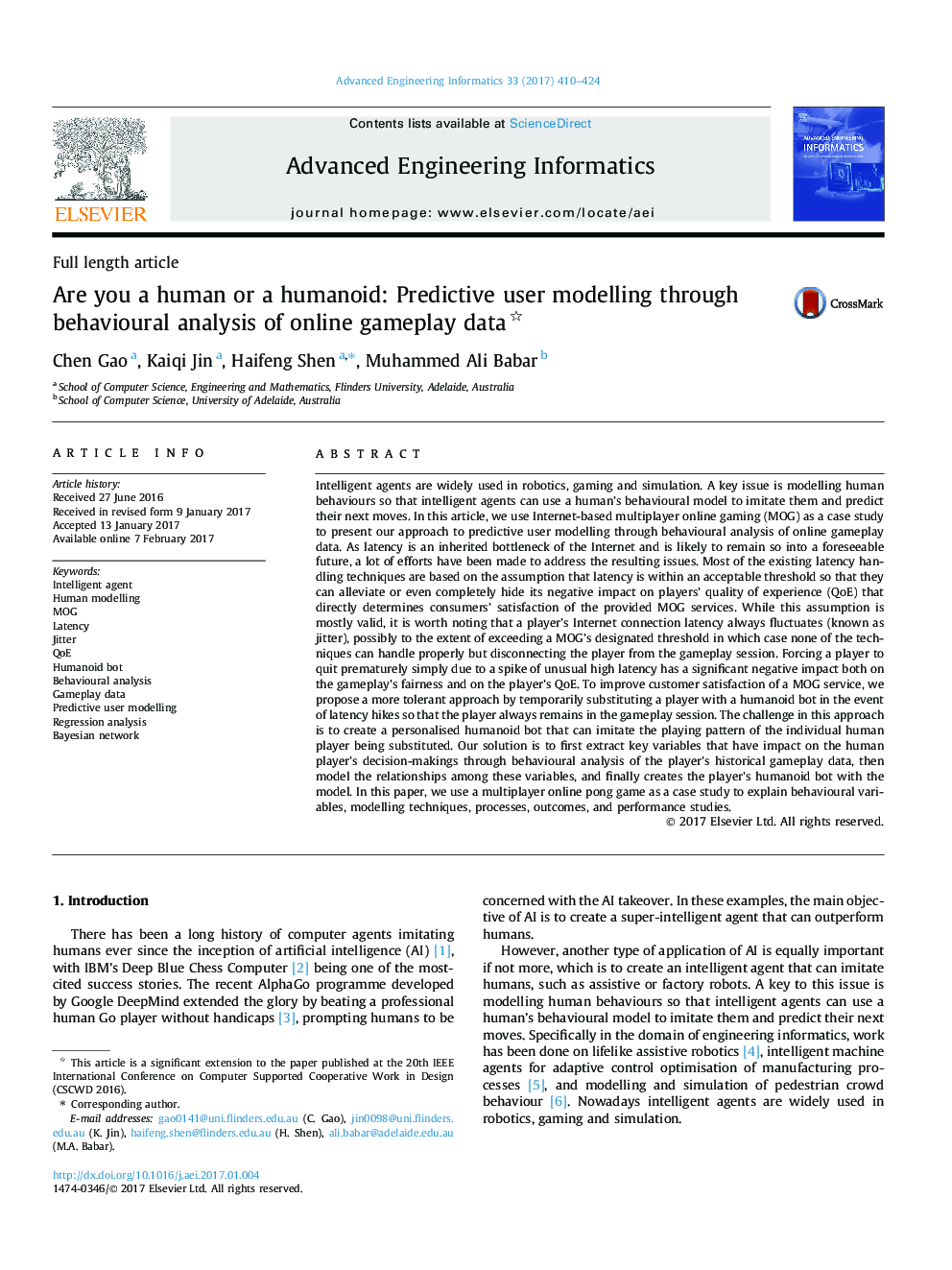| Article ID | Journal | Published Year | Pages | File Type |
|---|---|---|---|---|
| 6478408 | Advanced Engineering Informatics | 2017 | 15 Pages |
Intelligent agents are widely used in robotics, gaming and simulation. A key issue is modelling human behaviours so that intelligent agents can use a human's behavioural model to imitate them and predict their next moves. In this article, we use Internet-based multiplayer online gaming (MOG) as a case study to present our approach to predictive user modelling through behavioural analysis of online gameplay data. As latency is an inherited bottleneck of the Internet and is likely to remain so into a foreseeable future, a lot of efforts have been made to address the resulting issues. Most of the existing latency handling techniques are based on the assumption that latency is within an acceptable threshold so that they can alleviate or even completely hide its negative impact on players' quality of experience (QoE) that directly determines consumers' satisfaction of the provided MOG services. While this assumption is mostly valid, it is worth noting that a player's Internet connection latency always fluctuates (known as jitter), possibly to the extent of exceeding a MOG's designated threshold in which case none of the techniques can handle properly but disconnecting the player from the gameplay session. Forcing a player to quit prematurely simply due to a spike of unusual high latency has a significant negative impact both on the gameplay's fairness and on the player's QoE. To improve customer satisfaction of a MOG service, we propose a more tolerant approach by temporarily substituting a player with a humanoid bot in the event of latency hikes so that the player always remains in the gameplay session. The challenge in this approach is to create a personalised humanoid bot that can imitate the playing pattern of the individual human player being substituted. Our solution is to first extract key variables that have impact on the human player's decision-makings through behavioural analysis of the player's historical gameplay data, then model the relationships among these variables, and finally creates the player's humanoid bot with the model. In this paper, we use a multiplayer online pong game as a case study to explain behavioural variables, modelling techniques, processes, outcomes, and performance studies.
